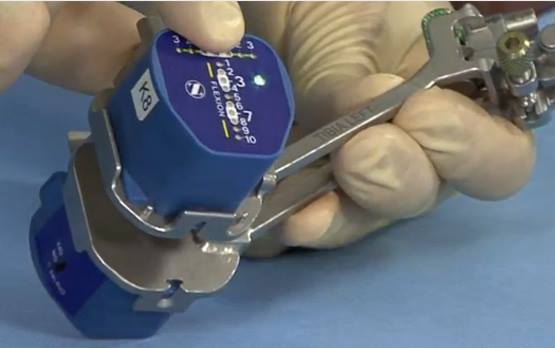New computer-assisted techniques will make knee operations more accurate
UCSD Health System became the first in the nation to use a device that improves surgical precision and accuracy. This FDA-approved iASSIST device, designed by Zimmer Holdings, Inc., enables the surgeon to verify each surgical step, reducing mechanical errors during complete knee replacements.
Approximately 600,000 total knee replacement procedures are performed in the United States every year. Knee surgeries require precise alignment in the knee, and the iASSIST computer navigation system is meant to improve surgical precision and accuracy, which will also effectively reduce the need for revision surgery.
Dr. Francis Gonzalez, a member of the Department of Orthopedic Surgery, believes the new surgery will benefit patients.
“This device enables orthopedic surgeons to restore a patient’s normal alignment with precision in a reproducible fashion, decreasing revision surgery and providing a more natural feel of the implant for the patient,” Gonzalez said to UCSD News.
Total knee replacement surgery has a higher failure rate when the knee is misaligned, according to Gonzales. The iASSIST program will decrease the failure rate and improve efficiency, as aging population may require more surgeries.
Current robotic and computer-assisted systems are far less efficient and require a large computer monitor in the operating room. However, this new device is only two inches wide and is the only thing needed to aid surgeons during knee replacement surgery.
“The iASSIST system allows us to bypass additional imaging and still get a patient-specific knee,” Gonzalez said. “This technology is quite intuitive and adds accuracy and precision to our instruments, giving us the ability to restore mechanical alignment with all patients regardless of their deformity.”
Diana Mertrude, a retired nurse, who was one of the first patients at UCSD Health System, is an example of a successful surgery using this new device.
Arthritis is one of the leading causes for joint replacement surgeries, and the procedure involves replacing the damaged joint surfaces with metal and plastic implants.
Due to arthritis, Mertrude felt pain in her left knee and sought a knee replacement. The surgery was a success — just three days after surgery, she was discharged and walked out of the hospital unaided.
Three months later, according to Mertrude, she was able to continue her passion for tennis.
She went on to have her right knee replaced and is looking forward to cross-country motorcycle riding with her friends and family this spring.
“The surgery truly improved my quality of life,” said Mertrude.








